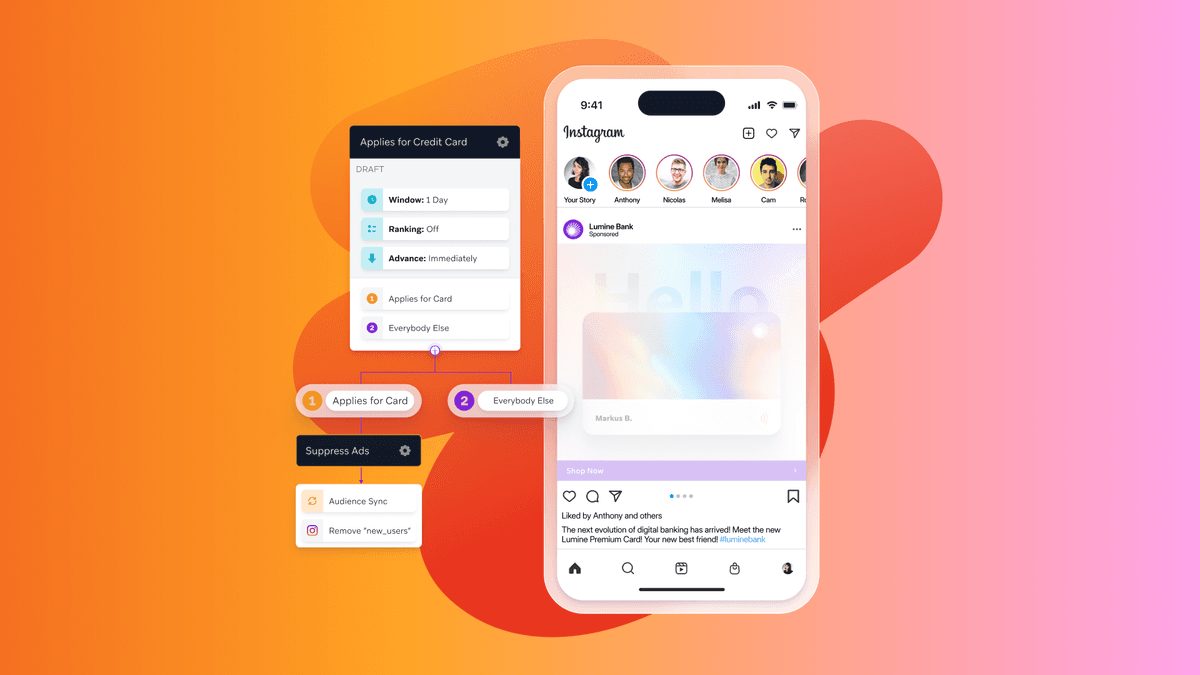SMS Marketing Deliverability: Know Your SMS Phone Number Options
Published on March 30, 2021/Last edited on March 30, 2021/8 min read


Mary Kearl
WriterConsidering adding short message service—better known as SMS—as a new messaging channel to reach and engage your audience? One of the first things you’ll want to work out is what type of SMS phone number you’re going to use to send your text message marketing campaigns.
To do that, it’s important to understand what your options are and your objectives when sending SMS marketing messages. Some key factors that will likely influence which SMS phone number you pick include: Your country of operation (and the countries where your subscribers are based); how quickly you want to start sending text messages; how many campaigns you want to send at any given time; and how fast you want those messages to be sent.
So let’s dig into the five most common types of SMS phone numbers, as well as the relevant considerations when it comes to using each.
5 Types of SMS Phone Numbers You Need to Know About

#1: SMS Short Codes

This type of SMS phone number is a five- or six-digit number, available in the US, Canada, UK, and a number of other countries, that brands can use to deploy and receive text messages to and from customers. Some key things to know about using short codes for your SMS campaigns include:
- Short codes offer high SMS throughput (number of messages sent per second). Standard throughput for short codes is 100 messages sent per second, which works out to one million messages in about 3.5 hours. That makes them a powerful tool when you need to send a lot of SMS in a relatively short window.
- Short codes work best when they’re used as dedicated phone numbers for your brand's exclusive use. Although some brands experiment with shared short codes, this approach comes with significant risks. For example, if a customer unsubscribes from another brand you are sharing your short code with, that customer is automatically unsubscribed from your messages as well—even if they don’t wish to stop receiving SMS from you. If another brand sends a message that violates SMS regulations, resulting in a suspension, your brand will be automatically suspended as well. As a best practice, we recommend that you always err on the side of having a dedicated short code for your brand and SMS campaigns.
- You can use short codes to send both SMS and MMS. MMS stands for multimedia messaging service, so they’re texts containing media, such as images or videos.
- There is an 8-12 weeks application process involved before you can begin using your SMS short code. You cannot start sending your campaign until your application is approved, so plan a quarter in advance from your desired campaign timeline in order to ensure that your SMS setup is complete before essential campaigns need to be sent.
- Short codes are not available everywhere. Make sure you check the short code availability in regions of interest before you start to plan your SMS campaigns. It may be prudent to start with regions where short codes are readily available (such as US and Canada), learn what works best and then gradually add SMS campaigns to other regions.
- There is annual leasing cost for short codes that should be figured into your budgets. Don’t let this deter you from considering a short code, because the rewards of smartly executed campaigns and providing value for customers far outweigh these costs.
#2: Vanity Short Codes

Vanity short codes are short codes that brands can choose in order to ensure that their sending codes are consistent with their branding and/or easy for customers to remember. All short code capabilities, benefits and considerations of short codes are applicable for vanity short codes.
#3: SMS Long Codes

SMS long codes are a type of SMS phone number—in the US and Canada, they contain 10 digits—and can be used to send messages to and receive messages from your SMS subscribers. Because they're the same length as typical phone numbers, they're ideal for sending localized outreach with a personal feel. Some key things to know about using long codes for your SMS campaigns include:
- Are available in around 100 countries worldwide. Because their geographical reach extends beyond the US and Canada, long codes make it possible to power SMS marketing campaigns in a wider range of countries than traditional short codes.
- No application required. Unlike short codes, long codes don’t require brands to apply to carriers to send these kinds of campaigns, meaning you can send your SMS campaigns immediately.
- This type of SMS phone number can be used to send both SMS and MMS campaigns. That puts long codes on par with short codes when it comes to supporting both text-focused and rich, multimedia messaging experiences.
- Long codes are most appropriate for low volume or regionalized campaigns. With a lower sending throughput than shortcodes, long codes can only send about one message per second in the US and 10 messages per second internationally, making them ill-suited for campaigns that depend on quick sending speeds and massive scale. To send at the same volume as short codes in the US, for instance, you’d likely need 100 times as many long codes as you would with short codes.
- Messages sent via long codes may be filtered out and rejected in some countries. Since long codes don’t have to go through an approval process, messages sent via the long codes get rejected more frequently by carriers, which tends to lead to worse deliverability.
#4: Alphanumeric Sender ID

This is a special type of SMS phone number that can be used to enable brands to send messages that list their company name or brand as the sender ID, instead of displaying a phone number. Some key things to know about using alphanumeric sender IDs for your SMS campaigns include:
- May be available to send SMS campaigns immediately in some circumstances. If pre-registration is not required for your chosen alphanumeric sender ID, you can likely get up and sending quickly.
- Can function in some countries where short codes aren’t available and long codes may be rejected. If one of the countries where you’re looking to send SMS marketing messages doesn’t allow short codes, alphanumeric sender IDs can sometimes be a workable alternative.
- Can’t Support MMS. While alphanumeric sender IDs have their charms, they’re not MMS-enabled, so they can only be used to support text-based messaging campaigns.
- Availability and support for alphanumeric sender IDs varies in different regions. Just like with short codes, alphanumeric sender IDs aren’t universally available worldwide, so make sure to do your research on whether they’re an option in the countries your customers live in.
- Alphanumeric sender IDs do not support two-way communication between the sender (brand) and recipient (customer). Only the brand can send messages using alphanumeric sender IDs and the customer cannot reply, making it more suitable for transactional campaigns.
#5: SMS-Enabled Toll-Free Phone Number

With SMS-enabled toll-free numbers, your brand can send SMS campaigns that leverage the existing toll-free numbers that customers already use to contact your company, providing continuity and consistency instead of requiring you to introduce yet another phone number. Some key things to know about using SMS-enabled toll-free numbers for your SMS campaigns include:
- No need to wait. You can start sending your SMS campaigns right away when leveraging SMS-enabled toll-free numbers, as this type of phone number is available to use immediately.
- No MMS support. Toll-free numbers are not MMS-enabled, so text-messaging marketing campaigns sent via this method will necessarily be text-based, rather than leveraging visual or multimedia elements.
- These campaigns won't send as quickly as those sent via short code phone numbers. SMS-enabled toll-free phone numbers can only send about one message per second, giving them a significantly lower sending throughput than shortcodes and making them best for lower-volume campaigns that don’t rely on quick message delivery.
- Not globally available. While toll-free numbers are available in many parts of the world, only US and Canada toll-free numbers are currently SMS-enabled, so you need to obtain other types of phone numbers to support SMS campaigns in other regions.
Next Steps
Picking the right phone number for your brand and SMS marketing goals is one of the most important decisions you will make when setting up your SMS marketing program. Choosing options that aren’t a good fit for you needs or goals can have far-reaching negative effects, so take the time to think through your options with an eye to the long haul and don’t begrudge yourself the 8-12 weeks needed to activate short codes if that’s the best option for your needs.
Ready to maximize your SMS marketing outreach? For the most effective approach, it's important to consider this popular mobile messaging channel alongside your other key channels. Head to our guide: Adding SMS to Your Cross-Channel Strategy for expert advice for launching SMS within a broader customer engagement context.
Related Tags
Be Absolutely Engaging.™
Sign up for regular updates from Braze.
Related Content
View the Blog
What is triggered communication? How to automate smarter, timely campaigns

Team Braze

One year of the Braze Data Platform: Elevating user experiences and cross-team collaboration

Sahiz Kaur

Global and regional AI adoption: What it means for customer engagement
